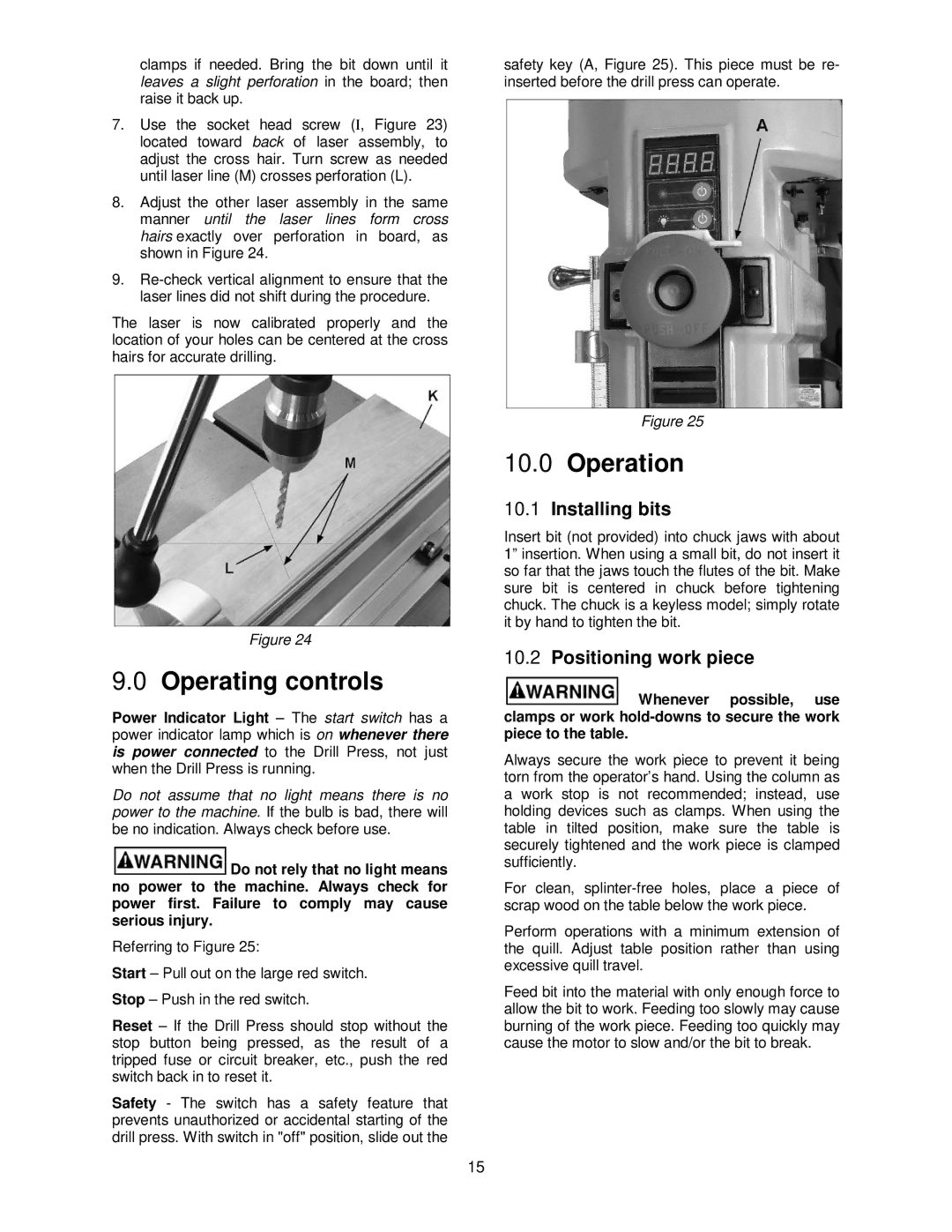
clamps if needed. Bring the bit down until it leaves a slight perforation in the board; then raise it back up.
7.Use the socket head screw (I, Figure 23) located toward back of laser assembly, to adjust the cross hair. Turn screw as needed until laser line (M) crosses perforation (L).
8.Adjust the other laser assembly in the same manner until the laser lines form cross hairs exactly over perforation in board, as shown in Figure 24.
9.
The laser is now calibrated properly and the location of your holes can be centered at the cross hairs for accurate drilling.
Figure 24
9.0Operating controls
Power Indicator Light – The start switch has a power indicator lamp which is on whenever there is power connected to the Drill Press, not just when the Drill Press is running.
Do not assume that no light means there is no power to the machine. If the bulb is bad, there will be no indication. Always check before use.
![]() Do not rely that no light means no power to the machine. Always check for power first. Failure to comply may cause serious injury.
Do not rely that no light means no power to the machine. Always check for power first. Failure to comply may cause serious injury.
Referring to Figure 25:
Start – Pull out on the large red switch. Stop – Push in the red switch.
Reset – If the Drill Press should stop without the stop button being pressed, as the result of a tripped fuse or circuit breaker, etc., push the red switch back in to reset it.
Safety - The switch has a safety feature that prevents unauthorized or accidental starting of the drill press. With switch in "off" position, slide out the
safety key (A, Figure 25). This piece must be re- inserted before the drill press can operate.
Figure 25
10.0Operation
10.1Installing bits
Insert bit (not provided) into chuck jaws with about 1” insertion. When using a small bit, do not insert it so far that the jaws touch the flutes of the bit. Make sure bit is centered in chuck before tightening chuck. The chuck is a keyless model; simply rotate it by hand to tighten the bit.
10.2Positioning work piece
![]() Whenever possible, use clamps or work
Whenever possible, use clamps or work
Always secure the work piece to prevent it being torn from the operator’s hand. Using the column as a work stop is not recommended; instead, use holding devices such as clamps. When using the table in tilted position, make sure the table is securely tightened and the work piece is clamped sufficiently.
For clean,
Perform operations with a minimum extension of the quill. Adjust table position rather than using excessive quill travel.
Feed bit into the material with only enough force to allow the bit to work. Feeding too slowly may cause burning of the work piece. Feeding too quickly may cause the motor to slow and/or the bit to break.
15
